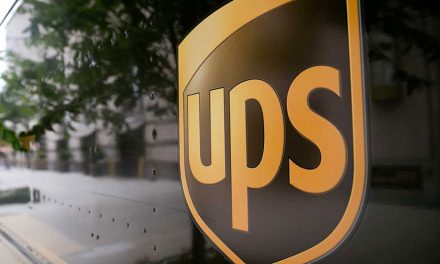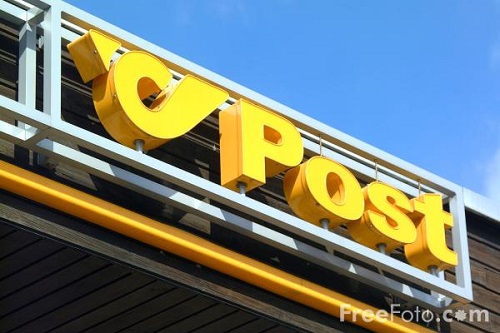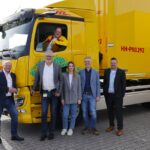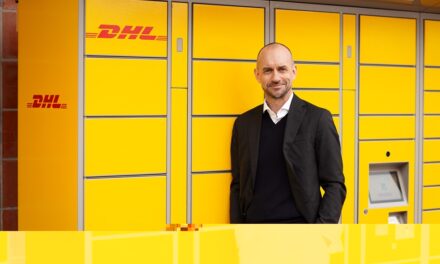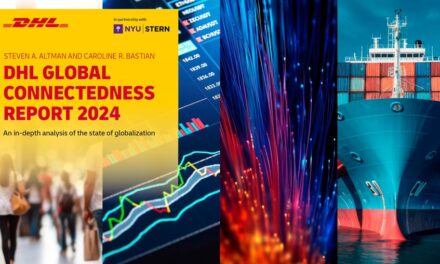
Deutsche Post DHL tests VW electric urban vehicles
Deutsche Post DHL is testing ten new Volkswagen Caddy blue-emotion commercial vehicles on mail delivery routes in Germany. The electric urban delivery vehicles will be in operation from July to September 2011 in Potsdam, Germany, as well as from the delivery depot in Stahnsdorf, transporting mail and parcels.
By testing the electric vehicles on delivery routes with a lot of stops, Deutsche Post DHL and the automobile manufacturer Volkswagen intend to examine how suitable electric vehicles are in commercial fleets. The fleet test is focusing on battery innovation, handling, range and safety of the nearly noiseless vehicles.
“Deploying the Caddy blue-e-motion in our everyday operations gives us important insights into the development of electric vehicles. By using electric-powered vehicles, we can deliver letters and parcels at low noise levels and without burning fuel. And by using electricity from renewable energy sources, we can make our delivery routes up to 100% carbon neutral. The environment is thus spared from additional air pollutants and noise. This is an important element of GoGreen, our group-wide environmental protection program. GoGreen is how we are taking action to reduce our emissions,” said Uwe Brinks, member of the Mail Divisional Board responsible for operations.
Deutsche Post DHL was the first global logistics company to set itself a specific climate protection goal. GoGreen aims to improve the company’s carbon efficiency by 30% by the year 2020 based on 2007 levels – in part by more efficiently managing the flow of traffic, modernizing the vehicle fleet and by using renewable energies.
“The Caddy blue-e-motion is not only a sensible ecological alternative for deliveries in urban areas, but also pays off in terms of operating costs,” said Dr. Wolfgang Schreiber, speaker for the Board of Management of Volkswagen Commercial Vehicles, at today’s (July 5) handover of the Caddy blue-e-motion to Deutsche Post DHL.
“We measured the typical day-to-day operations of a Deutsche Post Caddy with a standard combustion engine. Our key customer Deutsche Post DHL has about 20,000 Caddy delivery vans deployed around the country. Our results indicated that 80% of these vehicles always travel the same route and that is not longer than 50 kilometres. Because these vehicles stop and start so much, they only reach an average speed of five kilometres per hour. With maximum load, the Caddy burns up to 35 liters of fuel for each 100 kilometres. When used for delivery, the vans typically burn about 10 liters of fuel per 100 kilometres. The electricity that a Caddy blue-e-motion consumes – converted to the equivalent fuel consumption – is 2 liters per 100 kilometres.”
The Volkswagen Caddy blue-e-motion is powered by lithium ion batteries that have a capacity of 85 kW and a maximum speed of 120 km/h. The vehicle’s range is 110 kilometres and therefore well suited as a delivery vehicle. The payload of the Caddy blue-e-motion is about 230 kilograms less than a traditional Caddy (550 kilograms) due to the batteries housed under the floor; however the loading volume remains the same at 4.2 cubic metres. Charging stations have been installed at the mail depots where the vehicle batteries are recharged overnight.
The test is part of project “EmiL” funded by the Federal Ministry for the Environment, Nature, Conservation and Nuclear Safety. This project is also part of a wider support programme on electro mobility and is supported by EUR 100m by the Ministry.
Deutsche Post DHL is working with a number of vehicle manufactures in addition to Volkswagen in a series of tests on commercial vehicles in everyday operations in order to gain important insights into the use of renewable fuels and alternative vehicle drive systems. Today, Deutsche Post DHL has around 3,000 vehicles on the streets that use hybrid or electric drives, burn alternative fuels or have modified engine electronics and aerodynamic systems. The activities surrounding electric vehicles are intended in the medium term to help ready electric vehicles in the small and regular-sized delivery van commercial vehicle classes for mass production.
Earlier this week, Post&Parcel reported that DHL will provide a battery transportation service for Renault’s new fleet of electric cars. The operator is also road testing the new models.

